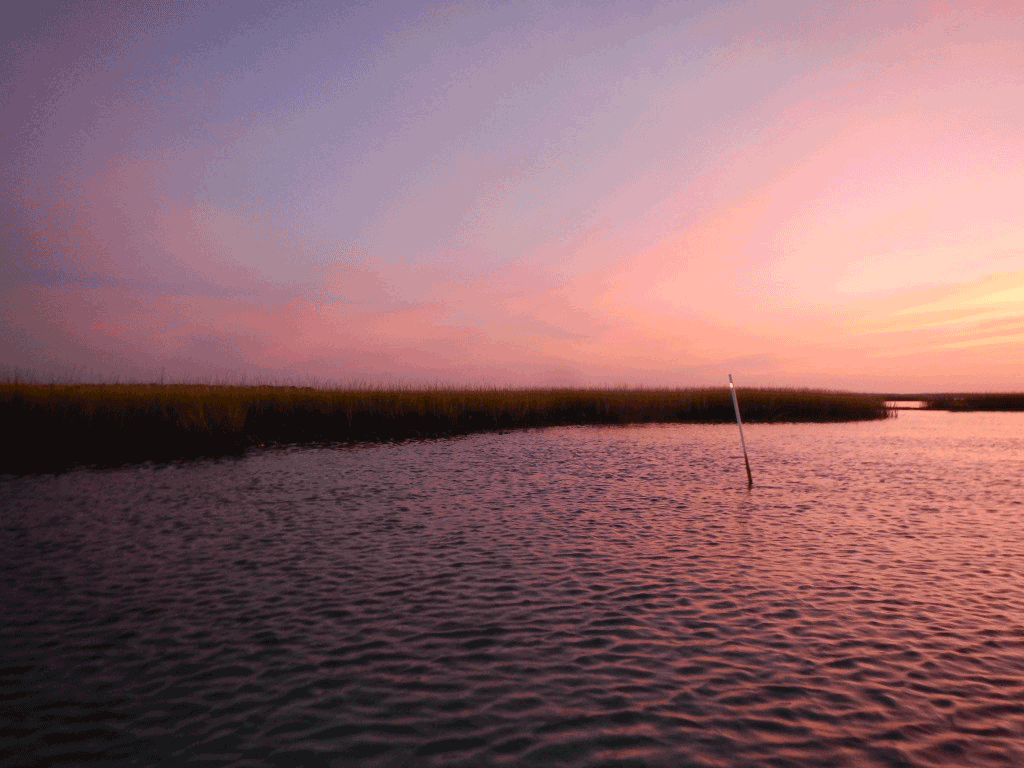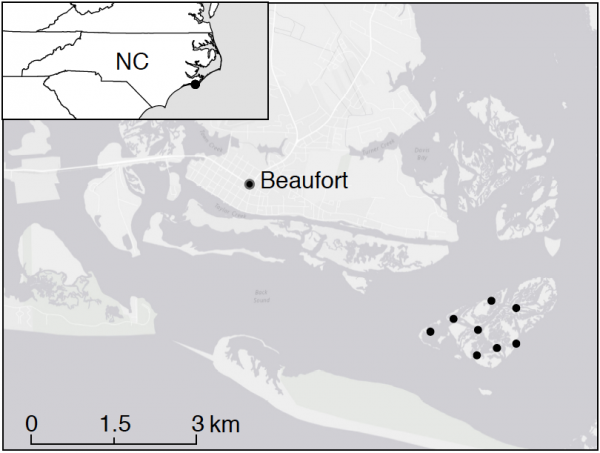Spatiotemporal Soundscape Patterns and Processes in an Estuarine Reserve
Project Overview
The goal of this study was to investigate how the soundscapes of estuarine habitat mosaics change over time and space, and how this spatial and temporal variability influences organisms living in these environments. Few studies, to our knowledge, have examined temporal patterns in the soundscape of a mosaic of intertidal, estuarine habitats. These environments are essential fish habitat for ecologically important species, like the silver perch (Bairdiella chrysoura), and economically important species, like the spotted seatrout (Cynoscion nebulosus). Passive acoustics provides a cost-effective way to obtain information on biodiversity and habitat characteristics (e.g., structural complexity; diversity of habitat types) that are potentially critical for ecological management and fisheries research. Our objective was to provide a baseline soundscape characterization for Middle Marsh, within the Rachel Carson Estuarine Research Reserve, investigate temporal patterns in the summer soundscape and identify what processes and environmental variables influence temporal soundscape patterns across the reserve.

Research Questions
- What are the temporal soundscape patterns in an estuarine reserve
- What processes drive those patterns?
- How does the soundscape reflect fish habitat use?
Study System

This study characterized the summer soundscape of the Rachel Carson Estuarine Research Reserve in Beaufort, NC. The reserve is a National Estuarine Research Reserve, and consists of mosaics of seagrass, salt marsh, oyster reef and soft bottom habitats.
We characterized the soundscape in the Middle Marsh portion of the reserve, which has been well studied from a faunal and water quality perspective, and is an active research and recreational area.
Soundscape Characterization Methods
- Deploy hydrophones at 8 study sites
- Record simultaneously 2 minutes every 20 minutes June-August 2014
- Soundscape analysis: low and high frequency bands, fish chorusing presence/absence
Major Findings
- Twice per day peak in low frequency, fish associated, band driven by fish chorusing activity and water level.
- Once per day peak in high-frequency sounds associated with snapping shrimp activity
- Fish chorusing by transient fish species seen only at sites adjacent to seagrass on the outer edges of the reserve. Chorusing by resident species present at inner sites – could be indicative of fringing reef habitat.
Associated Publications
- Ricci SW, Eggleston DB, Bohnenstiehl DR, Lillis A. (2016) Temporal soundscape patterns and processes in an estuarine reserve. Marine Ecology Progress Series 550:25-38.
- Ricci SW, Eggleston DB, Bohnenstiel DR. (2017) Use of passive acoustic monitoring to characterize fish spawning behavior and habitat use within a complex mosaic of estuarine habitats. Bulletin of Marine Science article link